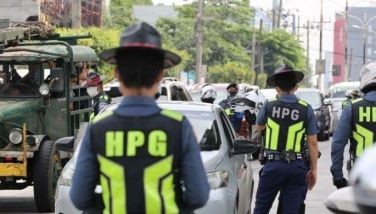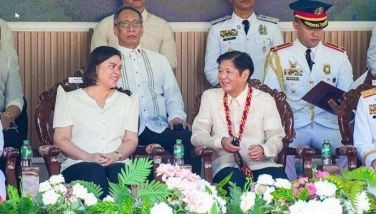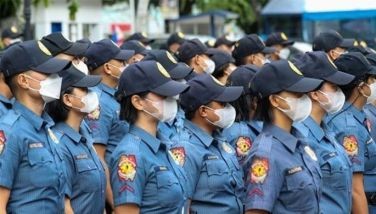#Journeyto30 Shoulder-to-shoulder with Uncle Sam
MANILA, Philippines – Filipino soldiers and military officials watched in awe as US Marines fired six missiles from the M142 High Mobility Artillery Rocket System (HIMARS) during a live fire exercise at the Crow Valley Range in Tarlac last Monday. The event was one of the highlights of the 2016 Balikatan exercises currently taking place in different parts of the country until April 14.
The Balikatan exercises, which began in 1991, are a stark reminder that American forces are back on Philippine soil after the closure of Subic Bay Naval Base and Clark Air Base in the early ‘90s.
The Philippine STAR’s Nov. 25, 1992 issue vividly captured that fateful day when the Star-Spangled Banner was lowered and the Philippine flag was hoisted at Alava Pier in Subic. American GIs embraced and kissed their Filipino girlfriends goodbye before boarding the USS Belleau Wood, which brought the last 1,416 sailors and marines back to the US.
On that day, Rear Adm. Thomas Mercer, commander of the Subic Bay Naval Base, officially turned over the base to then Olongapo City Mayor Richard Gordon, who was subsequently appointed as chairman of the Subic Bay Metropolitan Authority. Gordon announced that the base will be converted into a world-class freeport zone and invited investors from around the world to open their business in Subic.
By 1996, Subic Bay became a thriving investment destination for shipbuilding, logistics, semiconductor and manufacturing companies from different countries.
Closing the American bases was a thorn on the side of the Cory Aquino administration. It hoped to extend the bases’ stay in the country after the expiration in 1991 of the Military Bases Agreement of 1947. A new Treaty of Friendship, Peace and Cooperation between the US and Philippines was ultimately rejected by the Senate, leading to the closure.
That treaty, which would have extended the bases’ stay by 10 more years, would have poured a billion US dollars in American aid — something that a post-Marcos administration really needed in lieu of the previous regimes’ economic sabotage and widespread corruption.
The closure of the American bases has left a gaping hole in American military presence in Asia, leaving Singapore and Okinawa as the remaining stations where the US can counter the increasing influence of China’s peaceful rise that began in the ‘80s.
With its increased military spending, fueled by its booming economy, China began showing signs of belligerence in 1993 by occupying reefs in the disputed Spratlys Islands. In the following years, what were initially small above-water stations for fishermen were turned into military installations.
By 2010, the People’s Liberation Army navy, together with the Chinese coast guard, began patrolling the West Philippine Sea, blocking Filipino fishermen from entering atolls that are well within our country’s exclusive economic zone. Four years later, they would begin dredging the sea around these atolls, turning them into island fortresses that protect China’s nine-dash line claim, dubbed as the Great Wall of Sand.
With these looming Chinese threats to Philippine sovereignty, the Senate made an about-face from its decision in 1992 by ratifying the Visiting Forces Agreement in 1999. This led to regular goodwill visits of American forces in the country for rest and recreation, as well as training with their Filipino counterparts through the renewed Balikatan exercises.
As Chinese aggression in the West Philippine Sea became even fiercer, new agreements were concluded, including the recent Enhanced Defense Cooperation Agreement (EDCA). The controversial agreement signed in 2014 allows American forces to maintain a rotational presence in the country and construct facilities within Philippine military bases to support its forces.
The Supreme Court declared the agreement as constitutional in January, despite criticism from the Senate, which felt bypassed in the drafting and implementation of the agreement.
The lingering threats of the Cold War era justified America’s presence in the country from 1947 to 1992. And even if we’ve already forced Uncle Sam out, new security threats have forced us to welcome him once more in our backyard. Our relationship with the US is something that will definitely not deteriorate in the coming years, given our shared history.
However, it promotes a dependence that is founded on utang na loob for standing “shoulder-to-shoulder” — something that a sovereign and independent nation like the Philippines shouldn’t tolerate.
Such relationship doesn’t have to be detrimental to our sovereignty and national interest, if only we’ve negotiated every treaty with our country and our people in mind.
- Latest
- Trending































